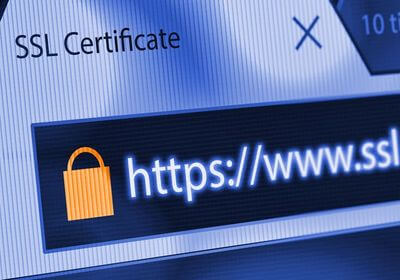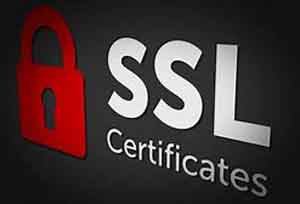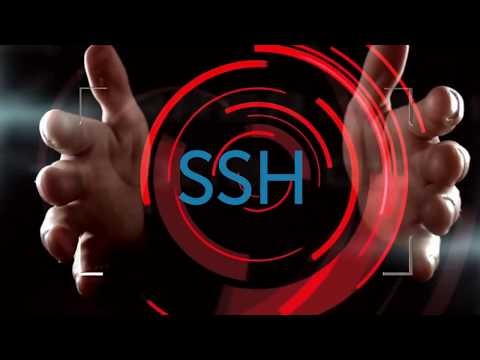Providing Professional Designing Services ⁃ Let our experts build your website
Securing online communications is vital. Our latest blog post explores SSL (Secure Sockets Layer) and SSH (Secure Shell), two essential protocols ensuring data privacy and trust. Learn how they protect transactions and enable secure remote access, making them critical for a robust online presence
It is used to encrypt the communication between a Web Browser and a Web Server. SSL or sometimes called HTTPS is also called Security Over HTTP. With SSL, the communication can be authenticated via a public-key and private-key pair. SSL is often used for sending credit card information, banking information, private emails, or just sending private information. You will know when you are on an SSL connection because your Web Browser will have the address prefix https:// in front of the URL.
When you visit a website, (provided the site has an SSL certificate). Your Browser and the website begin to what is known as the SSL handshake. The Browser checks the validity of the SSL certificate. Making sure it is authenticated by a legitimate party and therefore trustworthy. Every SSL certificate has two keys. A private key and associated public key. Their job is to handle encryption and decryption to communicate securely during the SSL handshake. After your browser confirms the SSL certificate is valid, the Web Server and the browser then creates what is known as a session key. Once a secure connection is established, both are communicating safely.

SSL encryption for your website is Security. The level of customer confidence and trust in a site increases 10-fold. Internet users have come to expect the HTTPS// prefix in their browser in order to be comfortable submitting any sensitive information. Google’s Gary Illyes interviewed in 2015 affirmed that when two web pages are otherwise equal, Google prefers HTTPS sites. Pushing the more secure URL to the head of the line.
•Customer information, like credit card numbers, is encrypted and Secure
•Visitors can quickly tell whether you are the registered business and owner of the Domain
•Customers are more likely to trust and purchase from Websites that use HTTPS

Green Bar EV SSL Certificates
As the highest class of SSL available, Extended Validation SSL Certificates (EV SSL) activate both the padlock and the green address bar in all major browsers.
Multiple Domain Certificates
A Unified Communications Certificate (UCC) is an SSL certificate that secures multiple domain names and multiple host names within a domain name. A UCC lets you secure a primary domain name and up to 99 additional domains in a single certificate.
Wildcard Certificate
Wildcard SSL certificates secures your website URL and an unlimited number of its subdomains. For example, a single Wildcard certificate can secure domain.rshweb.com, blog.rshweb.com etc.
Single Domain Certificate
Single domain SSL certificates provide security for a single fully qualified domain name. The straightforward nature of Single Domain SSL Certificates is an ideal solution for any size website.
SSL is a Security technology. It is a protocol for Servers and web browsers that makes sure that the data passed between the two are private and secure. This is done using an encrypted link that connects your Browser and the Web Server. Companies that request personal information from a user, such as payment information, should be using an SSL certificate on their website. Having one means that the details you are collecting are private and ensures to the customer that when they see the padlock and https://, their privacy is safe.

Early network protocols like Telnet and Remote Shell "RSH" did not provide enough protection against malicious Cyberattacks. The need for a more secure network communication method inspired the creation of the SSH protocol.
SSH is a cryptographic network protocol for operating network services securely over an unsecured network. Typical applications include remote command-line login and remote command execution to a Web Server, but any network service can be secured with SSH. SSH refers specifically to Encryption for programmers and network administrators. SSH normally uses port 22 to connect your computer to another computer or Server on the Internet. Network administrators will use this technique, so they can log in and remotely control a Server anywhere in the world. It also provides several alternative options for Strong Authentication with 2FA, and it protects the communications security and integrity with strong encryption. It is a secure alternative to the non-protected login protocols such as telnet, rlogin. And insecure file transfer methods such as FTP.
Any Linux or macOS user can SSH into their remote server directly from the terminal window. You can execute shell commands in the same manner as you would if you were physically operating the remote computer.
SSH clients that are used to connect to a remote computer. It makes the use of a secure shell protocol, to provide this functionality
SSH (Secure Shell) is widely used for secure remote access and management. Listing a few real-world examples of its applications:

PuTTY - PuTTY is a free, open-source SSH and Telnet client for Windows, prized for its lightweight, portable design and simplicity. It supports SSH2, SCP, port forwarding, and key-based authentication (RSA, ECDSA), making it ideal for secure remote access
MobaXterm: MobaXterm is a free (with a paid Professional version) all-in-one remote access tool for Windows, combining a tabbed SSH client with an X11 server, SFTP, and support for multiple protocols like RDP, VNC, and Telnet.
Bitvise SSH Client: Bitvise SSH Client is a free, robust Windows SSH and SFTP client known for its advanced graphical interface and tunneling capabilities. It supports SSH2, SFTP, dynamic/static port forwarding, and Kerberos authentication, with features like auto-reconnect for unstable connections and a command-line interface
Solar-PuTTY: Solar-PuTTY, developed by SolarWinds, is a free, enhanced fork of PuTTY that adds a modern tabbed interface, saved credentials, and auto-login features, requiring no installation. It supports SSH, SFTP, SCP, Telnet, and RDP, making it suitable for network administrators
SecureCRT: SecureCRT, a premium SSH client by VanDyke Software, offers advanced features for Windows, macOS, and Linux, including multi-protocol support (SSH, Telnet, RDP), tabbed sessions, and extensive scripting for automation. With robust encryption, color customization, and session management
Termius: Termius is a modern, cross-platform SSH client for Windows, macOS, Linux, iOS, and Android, offering a free version with premium upgrades. It features a sleek UI, cloud-synced sessions, SFTP, Mosh, and Telnet support
WinSCP: WinSCP FTP Client is a free, open-source file transfer client for Windows, supporting SFTP, SCP, FTP, FTPS, WebDAV, and S3, with a graphical interface for secure file transfers and basic SSH terminal access
FileZilla - FileZilla SSH and FTP client The FileZilla FTP Client is a free, open-source, cross-platform FTP, FTPS, and SFTP client for macOS, Windows, and Linux, with a focus on secure file transfers via SFTP (SSH File Transfer Protocol)
Terminal (Built-in): macOS’s native Terminal app is a free, pre-installed command-line SSH client that provides robust functionality for secure remote access without additional software. It supports SSH, SFTP, SCP, and key-based authentication, accessible via commands
iTerm2: iTerm2 is a free, open-source terminal emulator that enhances macOS’s built-in Terminal with advanced features like split panes, tabbed sessions, autocomplete, and customizable profiles. It supports SSH, SFTP, and Mosh, making it suitable for developers managing multiple remote servers
CyberDuck: Cyberduck FTP Client Cyberduck is a free, open-source macOS client focused on secure file transfers via SFTP, FTP, WebDAV, and cloud services like AWS S3. It features a graphical interface for drag-and-drop file management and supports SSH key authentication
Commander One: Commander One FTP Client is a free, dual-pane file manager for macOS, developed by Electronic Team in Swift, offering a powerful alternative to Finder with advanced SSH and file management capabilities. It supports SSH, SFTP, FTP, and FTPS for secure remote server access
PuTTY for Mac: PuTTY is a free, open-source SSH and Telnet client, originally designed for Windows but available for macOS via third-party ports or compilation. It provides a lightweight, command-line or basic GUI interface for secure remote access, supporting SSH2, SCP, port forwarding, and key-based authentication (RSA, ECDSA). Ideal for developers and network engineers
Secure Shell is a cryptographic protocol for secure remote access to systems over unsecured networks. It authenticates users and encrypts data, enabling secure file transfers, remote command execution, and system administration. Using public-key cryptography and secure tunnels, SSH protects against unauthorized access, making it essential for server management and secure communication.
Both SSL and SSH are designed to create confidential connections across the Web. With only a very few exceptions, it is not possible for a regular hacker to break into an SSL or SSH connection, but the encryption technology is only as reliable as programming can make it.
Both SSL and SSH are special encryption and protocol technologies used to connect two computers. SSL and SSH lockout eavesdroppers by encrypting or ciphering the connection and scrambling the transmitted data.
One of the best creative blog writers and social media. He has been sharing his design insights for over two decades. His expertise and passion for crafting engaging...
This policy contains information about your privacy. By posting, you are declaring that you understand this policy:
This policy is subject to change at any time and without notice.
These terms and conditions contain rules about posting comments. By submitting a comment, you are declaring that you agree with these rules:
Failure to comply with these rules may result in being banned from submitting further comments.
These terms and conditions are subject to change at any time and without notice.
Tweet Share Pin Email
Comments